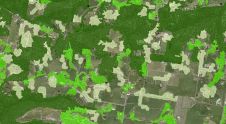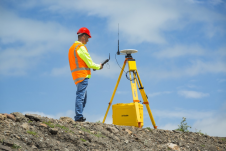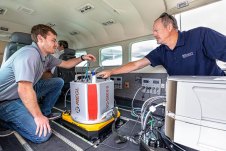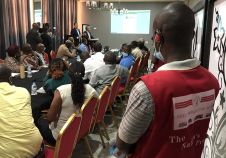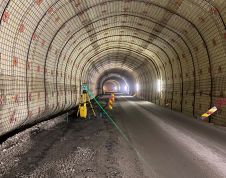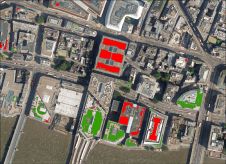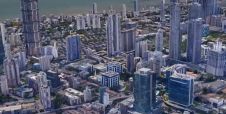Vegetation Management for Utilities Using Lidar Data
Vegetation and utility management of distribution and transmission lines has become one of the key applications related to Lidar and photogrammetry. The infrastructure sector, and especially the power line industry, has seen exponential growth in airborne surveys in recent years. Helicopters and aeroplanes are collecting thousands of kilometres’ worth of corridors of Lidar and imagery data for analysis every day. And their ‘little brother’, the unmanned aerial vehicle (UAV or ‘drone’), is starting to become a reliable alternative (albeit with limitations) for less accessible areas and small-scale surveys.
Laser scanning is the most accurate and efficient solution for collecting geospatial information in 3D as it is even able to collect information under tree canopies or in shaded areas. This information holds great potential for surveyors, but in some cases data remains underused meaning that much of that potential goes to waste.
Data Handling
The problem starts as soon as the survey generates data. Some companies are unaware just how precious the data they have collected is. Especially since UAVs have arrived on the scene, some clients merely want to offer their customers ‘something beautiful in 3D’. For the generation of technicians and geospatial analysts who have witnessed the evolution from low-resolution satellite acquisition and expensive private flights to high-resolution imagery (like Google) and Lidar, this seems like sheer madness, because there are unlimited applications and possibilities of Lidar data on any platform (whether helicopter, aeroplane or drone). For example, thanks to the most advanced and 100%-customised analysis and accurate 3D models, we can now do our work better in our offices than we could in the field… so how valuable does that sound?
Today, companies like utilities that are involved in infrastructure management – often with hundreds or even thousands of kilometres to manage – seem to better understand the value of Lidar data and how it can help them in their daily work... maybe because they understand how beneficial it is to be able to host their complete electricity network in a database and to evaluate every single span or structure with it, anytime, anywhere; or maybe because they have to monitor risks and avoid potential problems in the network that could cause huge financial loses (power cuts, indemnities, etc.). Whatever the reason, they are not only looking for a ‘nice’ 3D model, but they also need to know the exact condition of their network, where their problems are and at what level, an accurate estimate of the actions to be taken and which ones should be taken first… in other words, how much time and money they have to invest to make their power lines safer and comply with the regulations and laws in each country.
Knowledge is Power
It is all about the need to own a realistic and accurate virtual environment. Not too long ago, one had to go out into the field and measure. Today, the Lidar data is displayed in such a realistic way that it almost equals what you would see in reality – that is the power of point clouds! And with deep knowledge and the appropriate tools, any analysis and measurements will be as accurate as when performing an on-site survey.
一起定制分析符合priorities and risks (offending vegetation areas, clearance distances, tree fall risk, etc.), this gives network owners the power of understanding and monitoring what is being done and what will be done. Every single action can be reported and evaluated, and the budget can be negotiated depending on the accuracy with which the job was completed (i.e. checks on vegetation trimming patrols).
Continued Innovation
However, the benefits of Lidar data combined with other geospatial sources do not stop there. While vegetation analysis and clearance is today helping utilities to control and manage their networks, further innovation is already being implemented to allow data owners to also manage and control the related tasks done by third parties. Thanks to Lidar data analysis and custom algorithms, vegetation growth rates and safety distances can be combined to estimate potential risk areas and to set priorities, not only for this year but also for the years to come.
From our experience in analysing more than 120,000km of power lines, we have learned lots of things from our clients, but two things always hold true: 1) No two utilities work in the same way, and 2) All the complex analysis to be done and beautiful 3D models to be designed must fit into traditional outputs such as an Excel file or a PDF sheet… and from now on, that information must be in the cloud!
Make your inbox more interesting.Add some geo.
Keep abreast of news, developments and technological advancement in the geomatics industry.
Sign up for free













